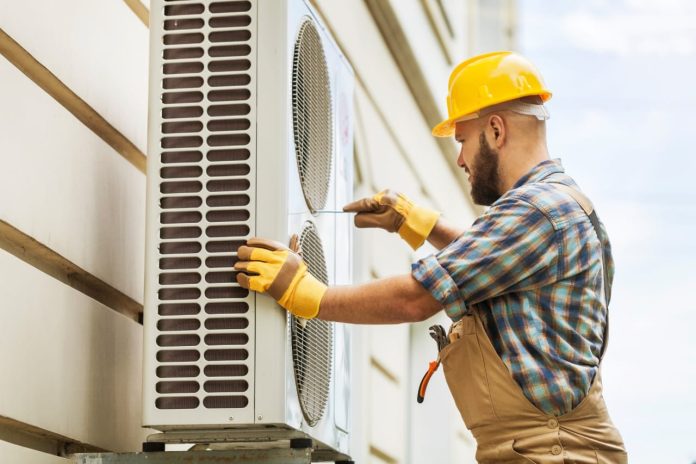Can’t handle the heat?
Temperatures have risen all around the globe because of our growing climate change. New Jersey, for example, has become one of the fastest-warming states in the US. Studies show that more than 34 million people in the US live in fast-warming areas like Los Angeles and New York.
If your temperatures are soaring and don’t seem to get any cooler, it may be time to install an AC unit. If you’re leaning towards a DIY installation, then look no further. This article contains what you need to know about how to install an AC unit.
Read on to discover the steps to install an AC unit.
Choose the Right AC Unit
Before you perform an installation by yourself, it’s crucial to choose the right AC unit. Most American households opt for a central air conditioning system. This allows them to pump an adequate amount of cool air around the house.
Central air conditioning units often come with a heating unit. If you only need the air conditioning, you can get a ductless split system. Portable units and window AC units are also available if you’re looking to cool only a single room.
When choosing an air conditioning unit for your home, you don’t always have to go for the biggest option. You can measure the output you need in British Thermal Units or BTUs.
It takes about 18 BTUs to deliver cool air to 1 square foot of a house. If you’re unsure what AC unit size you need, you can calculate it by multiplying your home’s square footage by 18. Multiply the number by 1.25 if your home has high ceilings.
Finally, divide the product by 12,000. This gives you the tonnage you need for your AC unit. Most households use 3 to 4 ton-AC units.
Take note that a too big or too small unit will not cool your home in the most efficient manner. If you want to ensure you get the right size, consider having a technician evaluate your home.
Safety Considerations of DIY Installation
Are you wondering, can I install an AC unit by myself? If you’re looking to replace an existing AC unit, there are some safety considerations. Before installing a new AC unit, you first need to recover the remaining refrigerants from the old one.
You may need to hire a professional to do this. Because it can be toxic, one must have a certificate for EPA refrigerant handling. If you’re looking to DIY your AC installation, it’s best to reconsider this part.
If your new unit comes with a refrigerant, you can skip having to buy more. An undercharged unit will need additional refrigerant. This can be a hassle during the installation, so be sure to check your unit.
Decide Where to Install Your Unit
It’s the general rule of thumb to install your AC unit outside. Your central air conditioning unit should connect to your home’s ductwork. However, there are two different ways you can go about this step.
First, you can install the air conditioning unit on the roof. You may also opt to pour a concrete pad to put the unit on instead. Regardless of where you decide the put the unit, the location must have enough airflow.
It should not be in the way so it does not create any unnecessary noise. However, it should also be accessible enough for maintenance. Ensure that its location helps you install it with proper positioning and connectivity.
Check the Ductwork
If you want to ensure your new unit is energy efficient, it’s crucial to check the ductwork first. Your ductwork should be tightly sealed to prevent wasting fresh air. Failing to do so could not only result in less fresh air but also higher energy costs.
Ensure that your ductwork does not have any bends or saggy areas. This can affect the performance of your new air conditioning system.
What If You Need to Install Ducts?
Do you live in an older home? Are you looking to get a fan-and-coil unit? You may need to install supply and return ducts to the ceilings of your other rooms.
If you need to get ducts installed, you will need to call a professional contractor. Once in your home, your contractor will create a floorplan to determine the position of the ducts. They will then lay this floorplan over the first floor’s floorplan.
Most ducts feed through the floors and plunge down through ceiling registers. Ducts on the first floor often run through closets on the second floor if possible. If you’re worried about losing closet space, you can rest easy knowing that closet ducts take up less space than most think.
Think About Longterm Maintenance
Caring for your AC unit does not stop at the initial installation. Any AC unit requires regular upkeep and occasional repairs to stay functional. It’s good practice to clean or replace your air filters on a regular basis.
Check on the evaporator coil at least once every year and clean when needed. The same goes through with system debris and leaks from the refrigerant. It’s best to familiarize yourself with common AC issues.
This includes things like drainage problems, low refrigerants, and even clogged filters. If you’re not that knowledgeable about HVAC systems, it’s best to have air conditioning repair done by professionals.
Connect the AC Unit
Once you’ve positioned and secured the AC system, it’s time to connect the components. There may be a bit more work for indoor components, depending on your AC unit. After doing so, determine the adequate length for the refrigerant line and drain piping.
Connect the thermostat and electrical lines. Check on your refrigerant lines and remove any contaminants. If your AC is not yet charged, use the refrigerant to do so.
After completing these steps, you may then set the thermostat. Turn it on to see if the compressor and blower are working as they should. Your new AC unit should come with an installation manual with diagrams to help you along.
How to Install an AC Unit by Yourself
Now you know how to install an AC unit. Use this guide to start enjoying a more comfortable temperature in your home! For more home DIY projects, tips, and ideas, check out our other blog posts.










